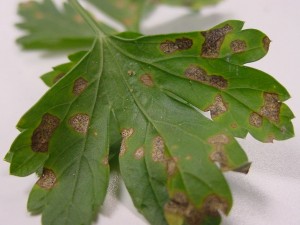Cabbage
Damping-off – To help control losses due to damping-off pathogens apply Ridomil Gold (mefenoxam, FRAC code 4) at 1 to 2 pt/A, MetaStar (metalaxyl, 4) see label, or azoxystrobin at 0.40 to 0.80 fl oz 2.08SC/1000 row ft (for Rhizoctonia only), or Ridomil Gold at 1.0 to 2.0 pt/A 4SL plus azoxystrobin at 0.40 to 0.80 fl oz 2.08SC/1000 row ft. in a band up to 7 in. after seeding. To help control damping-off pathogens in Collards and Kale only: Apply Uniform (mefenoxam + azoxystrobin, 4 + 11) at 0.34 fl oz 3.66SE/1000 ft row. For more information please see 2015 New Jersey Commercial Vegetable Production Recommendations Guide. [Read more…]



